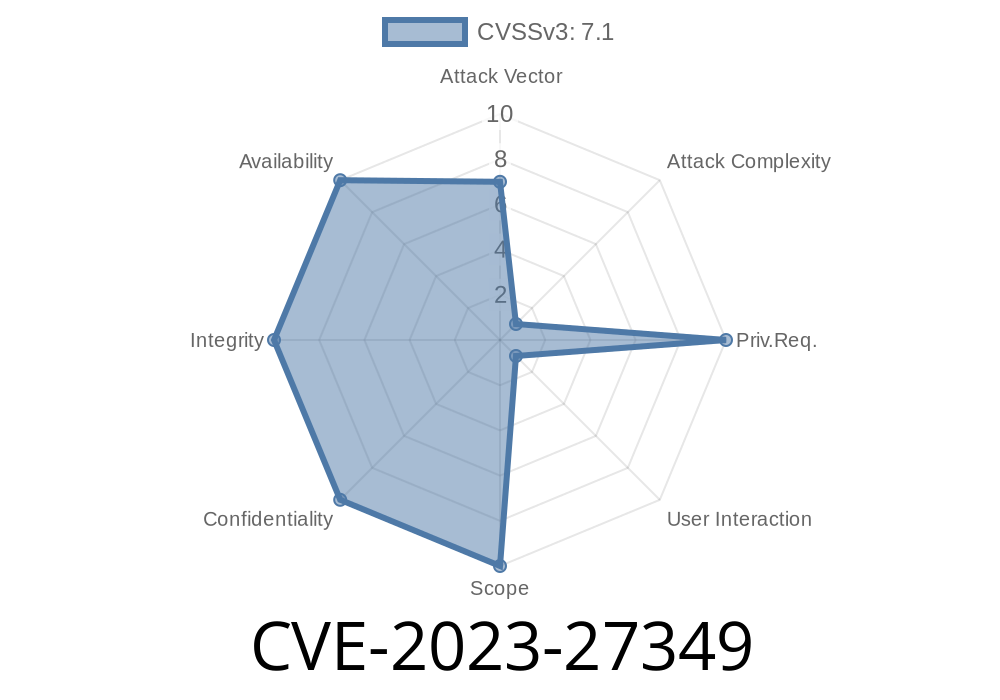A new network vulnerability has been discovered, dubbed CVE-2023-27349, which targets the BlueZ Audio Profile, specifically the Audio/Video Remote Control Profile (AVRCP). This vulnerability allows network-adjacent attackers to execute arbitrary code via Bluetooth on affected installations of BlueZ. User interaction is required to exploit this vulnerability, as the target must connect to a malicious device. The specific flaw exists within the handling of the AVRCP protocol, which results from the lack of proper validation of user-supplied data, eventually causing a write past the end of an allocated buffer. By exploiting this vulnerability, an attacker can execute code in the context of root. This vulnerability was previously known as ZDI-CAN-19908.
Here's an example code snippet demonstrating the improper validation of an array index
void process_avrcp_request(AVRC_REQUEST *request) {
uint8_t attribute;
uint8_t value;
// Read attribute and value from request data
attribute = request->data[];
value = request->data[1];
// Improper validation of array index, leading to out-of-bounds write
AVRC_ATTRIBUTE_VALUES[attribute] = value;
}
In the above example, the attribute is used as an index for the AVRC_ATTRIBUTE_VALUES array without proper validation, leading to a possible out-of-bounds write. An attacker can exploit this vulnerability by crafting a malicious AVRCP request.
Original References
- BlueZ Official Website: https://www.bluez.org/
- BlueZ AVRCP Specification: https://www.bluez.org/profiles/audio/avrcp/
- CVE-2023-27349 Details: https://cve.mitre.org/cgi-bin/cvename.cgi?name=CVE-2023-27349
Exploit Details
An attacker must first connect to a victim device using Bluetooth and enable the AVRCP profile. Once connected, the attacker crafts a malicious AVRCP request containing user-supplied data that triggers the out-of-bound write vulnerability. The malicious request is sent to the victim device, and upon receiving the request, the BlueZ software processes it and subsequently writes past the end of the allocated buffer. This can result in memory corruption, enabling the attacker to execute arbitrary code in the context of the root user, granting them full control over the victim device.
Mitigation and Recommendations
To protect against this vulnerability, ensure that the BlueZ software is updated to the latest version, which includes a fix for CVE-2023-27349. Additionally, exercise caution when connecting to unknown or untrusted Bluetooth devices, as they could be malicious and attempt to exploit this vulnerability. If you are a BlueZ developer, it is essential to implement proper bounds checking and validation for user-supplied data to prevent such security issues.
In summary, CVE-2023-27349 targets the BlueZ Audio Profile AVRCP and allows network-adjacent attackers to execute arbitrary code via Bluetooth if the target connects to a malicious device. This vulnerability stems from improper validation of user-supplied data, resulting in out-of-bounds write actions. By exploiting this vulnerability, attackers can execute code in the context of root, granting them full control over the victim device. Stay up to date with software updates and exercise caution when connecting to unknown Bluetooth devices to mitigate this security risk.
Timeline
Published on: 05/03/2024 02:15:13 UTC
Last modified on: 06/10/2024 17:16:11 UTC
